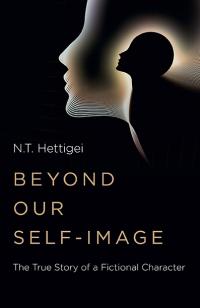
 Watching the Breath
Watching the Breath
We start by watching the breath. We won’t be watching the breath in the usual way. We will simply be noticing how the body moves as we breathe. Somehow, something somewhere is moving as we breathe. What moves? What doesn’t move? What expands? What doesn’t? How does air feel when it moves in us? How does breath sound? How does air move in and out? Watching and noticing.
Then suddenly we lose the focus. We have no idea what is happening with the breath because thinking has arrived unbidden. After only a few seconds our mind has taken off in ten different directions and at lightning speed. Simply take stock. This is a pivotal moment, because we have made a choice to recognize thinking and then to go back to a single focus. We have really seen and accepted our busy mind, and we decide to gingerly go back to watching the breath.
Pretending
But now we try watching the breath from a new angle. We try imagining or pretending that staying focused on the breath is easy (big stretch) – as though we have been doing this forever. We act our way through this. We pretend that we can focus on body movements as we breathe, and that we can feel and hear air moving through us as we breathe in and out. Just acting as though we are long-time breath watchers shifts our experience. As we go through this pretending exercise, we realize that we are able to stay a little more focused, even if only for a few seconds. But for those few glorious seconds, we slipped into quietness, we unhinged from the mind’s business and had a break from thinking – a complete break. How liberating.
Dissection
We have heard that we can get lost in thought, so we watch how our thoughts can take us over. We have heard that thought patterns are cyclical so we take a closer look. We watch how they move, how they change, and in how many directions they veer. We watch, listen and learn. The images, feelings and ideas produced by our thoughts will vary from person to person. But there are common themes. We repeat scenarios of past events. But if we can increase our awareness of these thinking habits, we can begin to witness them rather than be entangled by them. Instead of being run ragged by the monkey-mind, we watch.
To increase your awareness of the derailment, you can immediately pay attention to the first thought that takes you away. If, like me, a sound grabs your attention, notice what idea or association you have with that sound, and see what your mind wants to do with the idea. Then ever so gently you bring your focus back to the breath the next time you hear that sound. You can watch this and see if there is a pattern of initial distractions. Whether it is a sound or a sensation or a random notion that has landed out of nowhere, we are easily taken away by the mind.
Present Moment
Watching the breath is about being right here, right now, in this present moment. But what can be happening, in this present moment, is that our mind is anywhere but the present moment. The mind is both used to and eager to wander off and fantasize about the future, ruminate about the past, and repeat familiar thought scenarios. In our efforts to come back to the present moment, and watch the breath, we attempt to get rid of the pervasive thoughts. To get rid of them, we push at them. And if they won’t go away, we just try harder, and, before we know it, tension is back.
Our determination to get it right, stay with the breath and keep focused can cause us to tighten or push. Sometimes our attempt to quiet the busy-mind can be so subtle that it is almost imperceptible. The pushing away can be as light as resting your hand on a pillow, or focusing your eyes in the early morning. You can barely feel the weight of your hand, or the pull in your eyes but it is there. In turn, you can barely feel the push and determination to stay with the breath. Yet the tension can be there, and the push against something then implies that the something is bad or it is something we don’t want. Then we get judgment. But thoughts aren’t inherently bad. It is just that we inadvertently allow them to distract us, consume us or enrage us. We can end up following the endless trail of thoughts that go on forever, with no rest in sight. In our effort to not be so ruled by thoughts we push at them. But instead we just want to watch thoughts, not annihilate them.
Push Versus No Push
So how do we detect this barely perceptible push? Are we forcing our thoughts to retreat so we can focus on the breath? Yes, probably we are. The subtle sensation of our hand on the pillow, or the slight pull in our eyes, as we focus tells us where to begin. When we release our hand or close our eyes, we notice the barely perceptible sensation of not pushing. Then we repeat the hand and eye movements, and again notice the push. We repeat these push and non-push exercises. In so doing, we reinforce our perception of the subtle difference between tension and non-tension. And as we release from tension, we begin to notice a spacious feeling in our body, as if more air can suddenly find its way through us. Feeling the slight nuances of breathing, pushing, non-pushing and watching will take us far.
In this stillness, we sit with what is true. And what is true may be that we have feelings of deep sadness or residual anger. These emotions may now want to surface. See if you can let them rise without getting tense or frightened. Watching our emotions rise and fall is just like watching the breath rise and fall. Our emotions are part of our humanness. By simply watching, we are increasing our capacity to recognize and accept, without judgment, what is within us. Our deep emotions and our distracting thoughts are all part of the human condition. And if feeling strong emotions just starts to feel like too much, no worries, thoughts are right there, ready to rush in and save the day. Distracting thoughts can take over in no time. So then we go back to watching the distracting thoughts, trying not to get too caught up in their judgments. Then, we go back to watching the breath and so on.
Dee Willock has taught meditation and yoga for over 25 years. Her skill, innovative approach, resonant voice and calming presence are recognized and respected worldwide.
Buy this Paperback £9.99 / $16.95: AMAZON US |AMAZON UK |BARNES & NOBLE | HIVE | INDIEBOUND
| Follow this author |
 |
Categories:
0 comments on this article









